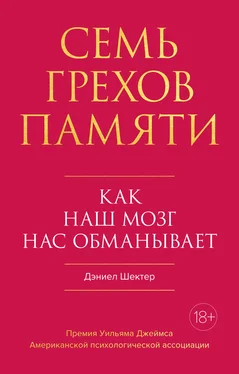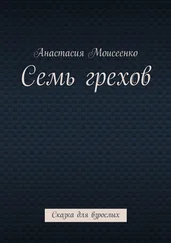Gould S. J. Darwinian fundamentalism // New York Review of Books. 1997a. Vol. 44. P. 34–37.
Gould S. J . Evolution: The pleasures of pluralism // New York Review of Books. 1997b. Vol. 44. P. 47–52.
Gourevitch P . The memory thief // The New Yorker. 1999. June 14. P. 48–68.
Gray J. D., Silver R. C . Opposite sides of the same coin: Former spouses’ divergent perspectives in coping with their divorce // Journal of Personality and Social Psychology. 1990. Vol. 59. P. 1180–1191.
Green J. P . Hypnosis, context effects, and the recall of early autobiographical memories // International Journal of Clinical and Experimental Hypnosis. 1999. Vol. 47. P. 284–300.
Greenwald A. G . The totalitarian ego: Fabrication and revision of personal history // American Psychologist. 1980. Vol. 35. P. 603–618.
Gudjonsson G. H . A new scale of interrogative suggestibility // Personality and Individual Differences. 1984. Vol. 5. P. 303–314.
Gudjonsson G. H., MacKeith J. A. C . Retracted confessions: Legal, psychological and psychiatric aspects // Medical Science Law. 1988. Vol. 28. P. 187–194.
Gudjonsson G. H . The psychology of interrogations, confessions and testimony. N. Y.: John Wiley, 1992.
Gudjonsson G. H., Kopelman M. D., MacKeith J. A. C . Unreliable admissions to homicide: A case of misdiagnosis of amnesia and misuse of abreaction technique // British Journal of Psychiatry. 1999. Vol. 174. P. 455–459.
Halperin J. L . The truth machine. Dallas: Ivy Press, 1996.
Hanley J. R., Cowell E. S . The effects of different types of retrieval cues on the recall of names of famous faces // Memory and Cognition. 1988. Vol. 16. P. 545–555.
Hanley J. R. Are names difficult to recall because they are unique? A case study of a patient with anomia // The Quarterly Journal of Experimental Psychology. 1995. Vol. 48A. P. 487–506.
Hanley J. R., Kay J . Proper name anomia and anomia for the names of people: Functionally dissociable impairments? // Cortex. 1998. Vol. 34. P. 155–158.
Happe F . Autism: Cognitive deficit or cognitive style? // Trends in Cognitive Sciences. 1999. Vol. 3. P. 216–222.
Harley T. A., Brown H. E . What causes the tip-of-the-tongue state? Evidence for lexical neighborhood effects in speech production // British Journal of Psychology. 1998. Vol. 89. P. 151–174.
Hastie R., Schkade D. A., Payne J. W . Juror judgments in civil cases: Hindsight effects on judgments of liability for punitive damages // Law and Human Behavior. 1999. Vol. 23. P. 597–614.
Hauser M. D . Wild minds: What animals really think. N. Y.: Henry Holt, 2000.
Hawkins S. A., Hastie R . Hindsight: Biased judgments of past events after the outcomes are known // Psychological Bulletin. 1990. Vol. 107. P. 311–327.
Hay D. C., Young A. W., Ellis A. W . Routes through the face recognition system // Quarterly Journal of Experimental Psychology. 1991. Vol. 43A. P. 761–791.
Heine S. J., Lehman D. R., Markus H. R., Kitayama S . Is there a universal need for positive self-regard? // Psychological Review. 1999. Vol. 106. P. 766–794.
Henke K., Weber B., Kneifel S., Wieser H. G., Buck A . Human hippocampus associates information in memory // Proceedings of the National Academy of Sciences of the United States of America. 1999. Vol. 96. P. 5884–5889.
Henkel L. A., Johnson M. K., DeLeonardis D. M . Aging and source monitoring: Cognitive processes and neuropsychological correlates // Journal of Experimental Psychology: General. 1998. Vol. 127. P. 251–268.
Henson R. N. A., Rugg M. D., Shallice T. et al . Recollection and familiarity in recognition memory: An event-related functional magnetic resonance imaging study // Journal of Neuroscience. 1999. Vol. 19. P. 3962–3972.
Heuer F., Reisberg D . Emotion, arousal, and memory for detail // The handbook of emotion and memory: Research and theory / Ed. by S.-A. Christianson. Hillsdale, N. J.: Erlbaum Associates, 1992. P. 151–180.
Hicks V. L . Experts explain John Doe 2 «sightings»: Bombing suspect may have been figment of witnesses’ imaginations // Boston Globe. 1998. June 14. P. A14.
Higham P. A . Believing details known to have been suggested // British Journal of Psychology. 1998. Vol. 89. P. 265–283.
Hilts P . Memory’s ghost: The strange tale of Mr. M and the nature of memory. N. Y.: Simon and Schuster, 1995.
Hilts P . J. In research scans, telltale signs sort false memories from true // New York Times. 1996. July 2. P. C 3.
Hinkle L. E., Wolff H. G . Communist interrogation and indoctrination of «enemies of the states» // Archives of Neurology and Psychiatry. 1956. Vol. 76. P. 115–174.
Holman E. A., Silver R. C. Getting «stuck» in the past: Temporal orientation and coping with trauma // Journal of Personality and Social Psychology. 1998. Vol. 74. P. 1146–1163.
Holmberg D., Homes J. G. Reconstruction of relationship memories: A mental models approach // Autobiographical memory and the validity of retrospective reports / Ed. by N. Schwarz, S. Sudman. N. Y.: Springer-Verlag, 1994. P. 267–288.
Houle D . Review of A. P. Møller and J. P. Swaddle: Asymmetry, developmental stability and evolution (1997) // Evolution. 1998. Vol. 52. P. 1872–1876.
Huppert F. A., Kopelman M. D . Rates of forgetting in normal ageing: A comparison with dementia // Neuropsychologia. 1989. Vol. 27. P. 849–860.
Hyman I. E., Husband T. H., Billings F. J . False memories of childhood experiences // Applied Cognitive Psychology. 1995. Vol. 9. P. 181–197.
Hyman I. E. Jr., Pentland J . The role of mental imagery in the creation of false childhood memories // Journal of Memory and Language. 1996. Vol. 35. P. 101–117.
Hyman I. E., Billings F. J. Individual differences and the creation of false childhood memories // Memory. 1998. Vol. 6. P. 1–20.
Jack C. R., Petersen R. С., Xu Y., et al . Rate of medial temporal lobe atrophy in typical aging and Alzheimer’s disease // Neurology. 1998. Vol. 51. P. 993–999.
Jack D . Between the lines of writer’s fall from literary pinnacle // The Scotsman. 1998. July 11. P. 3.
Jacoby L. L., Kelley C. M., Brown J., Jasechko J . Becoming famous overnight: Limits on the ability to avoid unconscious influences of the past // Journal of Personality and Social Psychology. 1989a. Vol. 56. P. 326–338.
Jacoby L. L, Kelley C. M., Dywan J . Memory attributions // Varieties of memory and consciousness: Essays in honour of Endel Tulving / Eds. H. L. Roediger III and F. I. M. Craik. Hillsdale, N. J.: Erlbaum Associates, 1989b. P. 391–422.
Jacoby L. L. A process dissociation framework: Separating automatic from intentional uses of memory // Journal of Memory and Language. 1991. Vol. 30. P. 513–541.
Jacoby L. L . Ironic effects of repetition: Measuring age-related differences in memory // Journal of Experimental Psychology: Learning, Memory, and Cognition. 1999. Vol. 25. P. 3–22.
James T. W., Kimura D . Sex differences in remembering the locations of objects in an array: Location-shifts versus locations-exchanges // Evolution and Human Behavior. 1997. Vol. 18. P. 155–163.
Jennings J. M., Jacoby L. L . Automatic versus intentional uses of memory: Aging, attention, and control // Psychology and Aging. 1993. Vol. 8. P. 283–293.
Johnson M. K., Chalfonte B. L . Binding of complex memories: The role of reactivation and the hippocampus // Memory systems / Eds. D. L. Schacter and E. Tulving. Cambridge, Mass.: MIT Press, 1994. P. 311–350.
Читать дальше
Конец ознакомительного отрывка
Купить книгу






![Диана Соул - Семь грехов лорда Кроули [publisher - ИДДК, с оптимизированной обложкой]](/books/395522/diana-soul-sem-grehov-lorda-krouli-publisher-id-thumb.webp)




